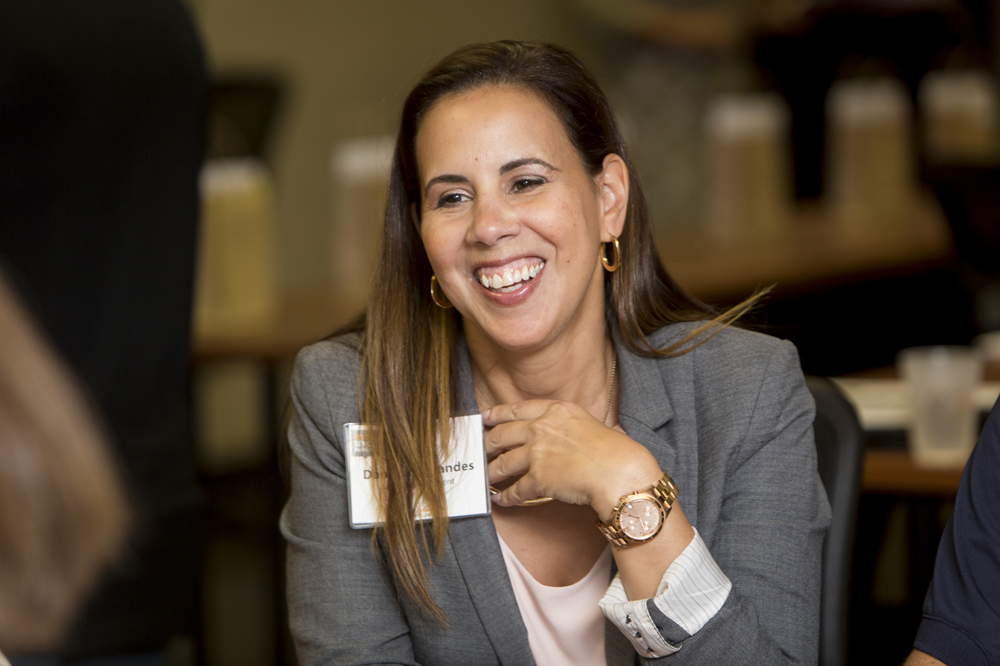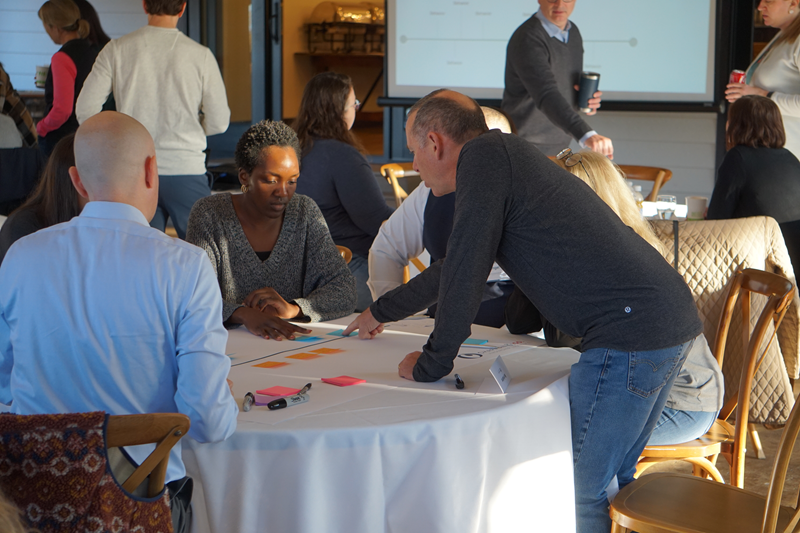Leadership Development Training
Organizations often promote the best doers into the position of leadership. We don’t always acknowledge that their job has fundamentally changed. In addition to being the expert, you are now asking for them to build new experts. Whether you have established leaders or new leaders, our leadership development courses provide the training that enables people to succeed in the role of leadership.

Our Approach to Leadership Development Training
Adults learn primarily through experience. We have designed a specialized approach to learning and development based on how adults make lasting behavior changes. Our leadership courses are built to emphasize learner motivation by applying knowledge, skills, tools, and frameworks to real-life scenarios and practical applications.
Our leadership training courses cover a wide range of topics that today’s leaders face. Participants can expect to learn from an expert facilitator with content built on the fundamental premise that everyone has gifts and talents that can be further developed throughout their lives.
Our leadership training programs are designed to inspire, engage, and challenge. From C-suite to frontline, we customize learning experiences to fit your organization’s unique needs and leadership roles.

Training Tomorrow’s Leaders
When you ask someone what a great leader does, regardless of generation, industry or geographic location, the answer is the same. Outstanding leaders effectively communicate, inspire, listen, and build trust. They are skilled in change management while aligning their team members' efforts with the organization's goals and business strategy. Each of these characteristics and leadership skills can be taught, practiced, and replicated, allowing you to scale your leadership talent as your business grows. Topics include:
Listen
Develop better relationships and make more informed decisions
Feedback
Deliver effective feedback that inspires constructive behavior change
Trust
Build resilient and high-performing teams
Organizational Communication
Engage, inform, and inspire your people
Recognition and Celebration
Appreciate your people and drive engagement
Truly Human Customer Service
Internal and external, build a culture of service
Effective Teams
Utilize the science behind why some teams outperform others
Effective Meetings
Make time with your team more effective (in-person or virtual)
Effective Projects
Lead your team to achieve goals, meet criteria, and strengthen interpersonal relationships
Leading Change
Discover the roadblocks to personal and organizational change
Include
Rethink diversity and inclusion in the workplace (4 hours)
Goal Setting
Measure what matters and align your team
Emotional Intelligence
What is it? Why does it matter? How do you develop it?
Authenticity
Ground and align your leadership with personal values
Coaching
Increase your team’s leadership and problem-solving capacity
Communication Skills
Develop effective communication skills and strengthen relationships
Presentation Skills
Make your point and inspire others
Resiliency
Recover faster, recharge, and build skills to handle stress and serve others
Strategic Planning
Deploy your strategic plan to gain engagement at all levels
Manage Conflict
Navigate challenging conversations
Accountability
How to care for people and inspire them to do more
Leadership Training to Grow Your Organization
We’ve all worked for great leaders and toxic leaders. We know and experience the impact of inspiring and poor leadership on reaching our own full potential. In any organization, leadership – or lack thereof – significantly impacts both corporate culture and business outcomes. Yet when it comes to leadership training, many companies fall short of equipping leaders with the tangible skills to lead. Skills that provide many organizational benefits:
Build Long-Lasting Relationships
- Training leaders to better communicate with team members and direct reports will lead to stronger relationships.
- Building communication skills helps break down silos, build a positive company culture, and create capacity for difficult conversations.
Increased Productivity
- Getting employees to have a leadership mindset can increase productivity across the board.
- Effective leaders know how to optimize team performance. This leads to increased productivity and efficiency.
Boost Employee Engagement
- Employees are more engaged and productive when they have strong, effective leadership.
- Providing training shows employees that the organization values its leaders' growth.
Encourage Succession Planning
- Developing the next generation of leaders is vital for organizational success.
- Leadership training prepares managers to take on increasing responsibility.
Enhance alignment
- Training helps unite leaders around company values, strategy, and culture.
- This alignment improves consistency and strengthens decision-making across the organization.
Similar Services
Customer Service Training
Help your team deliver stronger customer outcomes with customer skills training.
Learn MoreLeadership Development Program
The best way to grow your team is by investing in the talent you already have.
Learn More


